Mihir Jaiswal's Blog, page 9
October 26, 2018
Mississippi Head Water: In Five Pics
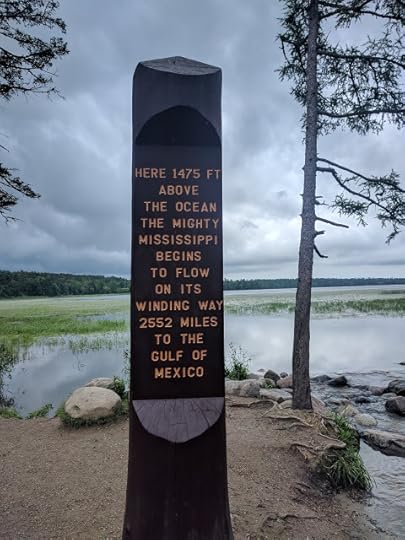

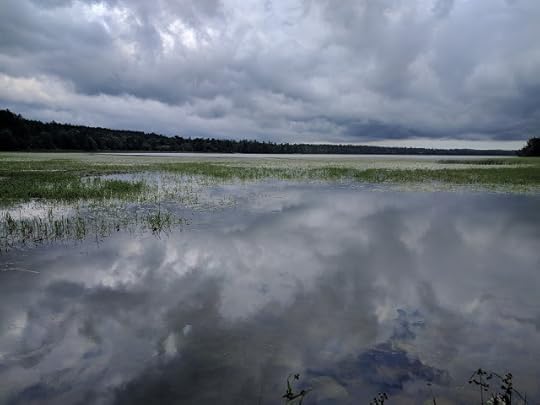

October 14, 2018
National Tom Sawyer Days: In Five Pics



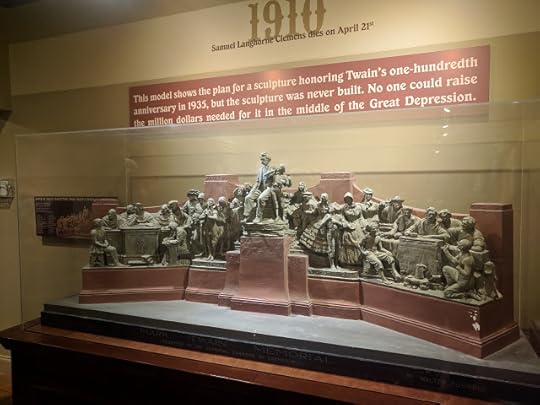

October 8, 2018
Hall of Mosses - The Most Colorful Trail in US: In Five Pics





March 26, 2018
Cahokia Mounds: A Mirror into Doomsday
Humankind since invent of the TV has dreamed up and glorified many ways to end the world: Aliens, Comet, Dinosaurs, Earthquakes, Virus, Zombies, Robots, and many more. Could it be simpler than that? A change in culture is enough to bring about the downfall, as might have been the case of the Mississippian civilization.
Past couple of years, I traveled to many small towns in the USA. I met with different native people, who are all classified under a bucket, Native Americans, formerly known as Indians. As I explored more history, I quickly realized that many different cultures and tribes existed and still exists in the USA. One common amongst all of them was the conflict with European settlers, which led to their downfall. However, Cahokia Mounds is an exception.
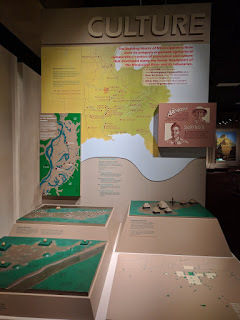 A map of Mississippian culture civilizations
A map of Mississippian culture civilizationsLast labor day, I visited Effigy mounds in Iowa. Different native people living in on the banks of Mississippi river used to make mounds, in variety of shapes and sizes. Many theories exist of their purpose: each as likely as the other. When urban expansion hit Midwest, several thousands of the mounds were destroyed to make room for modern cities and towns. Some of them preserved and protected, like effigy mounds. I will probably write a separate account of effigy mounds.
My second visit to the Mississippian civilization in Cahokia, Illinois near St. Louis was more exciting. Cahokia had a central mound, 200 ft high, like a pyramid, probably for religious ceremonies. It had a solar calendar with known as Woodhenge, multiple wooden poles in three different size circles. It was a walled village with stockade. According to an estimate, Cahokia was larger than London in 1200 A.D. Archeologists have discovered 104 mounds at the 2000 square feet site, in addition to many artifacts of daily life.
Today, Cahokia mounds site has many well-marked trails. Most of the mounds are covered in vegetation. Turkeys, dears and other wildlife frequent the area. I visited during the coldest day of the winter, so visitors were limited in numbers. A museum inside the visitor center shed some light on the culture, weather, location and history of Cahokia as well as its relationship to other Mississippian civilizations at the time.



Archeologists could not find enough evidences to determine the possible reason for downfall of a prosperous civilization. The possibilities were war, natural disaster, failure of leadership, and cultural changes. War and natural disasters seemed unlikely as 104 mounds stood intact. Failure of leadership could have driven away people. Most likely reason was the cultural changes. What does that mean?
The land was very fertile where Cahokia was. The citizens mastered the art of farming. They soon were growing more food than they needed. As a result, some citizens diversified into tool making, performing, advising and other professions. Over the time, more and more people moved away from the basic task of growing food. Probably, they ran out of farmers and food leading to downfall of the city. The situation is quite similar. The world is full of non-farming people like me, who are wasting time in regulation, politics or laziness. Aliens and robots are far reality. Our doomsday is scripted by us by ignoring our basic needs.
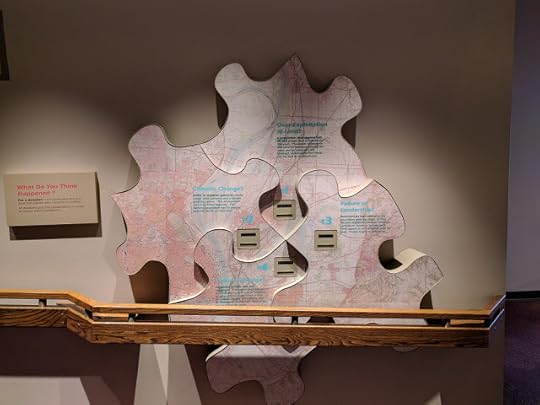 A survey of possible downfall reasons of Cahokia
A survey of possible downfall reasons of CahokiaVisit Cahokia Mounds, largest archeological site in the USA: https://cahokiamounds.org
March 18, 2018
Lost and survived in North Carolina
I was on my way to Florida to witness a Space X launch from NASA at Cape Canaveral. It was a spontaneous trip, but straightforward drive down I-95. Google map showed fourteen-hour’s drive to Daytona, where I booked a motel to stay, as Orlando was expensive. I started from Silver Spring, Maryland at 6:30 in the morning to beat the rush hour traffic. Nonetheless, merciless I-95 had more than usual traffic on that day. By the time I crossed Virginia and entered North Carolina, it was already past noon. I was speeding to make up lost time in the traffic.
Notorious I-95 hit me with a construction around 3:30 somewhere in North Carolina. The traffic was at the standstill and Google maps showed a long red line on my way. I decided to take a small detour through some local roads. In driving over 40,000 miles, I had taken these types of detour numerous times successfully. More than 10 times around forest city in Arkansas while traveling between Little Rock and Memphis. Google map did not show any better alternate way, though. I used to defy technology, so I did not think twice.
One mile after I exited I-95 a series of events led to an unusual situation. A sixteen-wheeler truck had attempted to take a u-turn and was stuck on the road blocking all lanes on both sides. Instead of waiting it to clear, I turned left to a narrow road after few cars. My assumption was, at some point GPS would pick up where I was and show me the way back to I95 towards Florida. A half-mile on the narrow road, the road was closed, again due to construction. The road after the barrier was unpaved. Three blockades in two miles was a sign I should abandon looking for detour and wait it out on the freeway, but I decided otherwise.
I took the lead and turned right before the barrier. Three cars followed me and the rest turned around. The road was narrow with no divider, had no junctions to go out. After driving five minutes, the road entered woods, not dense but could be classified as forest. A junction was few feet ahead of me and I looked at the map in my phone to give me directions. My phone had no GPS or mobile network. I took left turn, direction I would expect I95 south to be. I restarted my phone.
Out of three cars, one car followed me. I have been delaying update on my phone for few days. I forgot that detail. When I restarted my phone, it started update and did not restart. At that moment, I decided to take next couple of left turns assuming directions to I95. The car behind me is following me uncomfortably close. If I stop, he would not have enough time to put his brakes and collide with me. I looked at my phone still updating. It was almost five and being February the Sun was about to set. I looked in my mirror, I saw guy in the car behind me had a shotgun in his right hand. If I stopped then, I would be robbed at least.
I slowed down and took a left turn. My stalker followed me. Fortunately, he was a good driver. Even though tailgating closely, he did not collide with me. I looked at my still updating phone. Then I scanned the gas levels. I had 88 miles to escape. I took one more left turn. The road was curvy, so lost my sense of directions and started making random turns at every junction. My follower as expected kept making all the turns behind me. No other car entered the road. With darkness settling in, no other sign of life was evident. After half an hour of rat race, my phone finished updating itself. I opened the map. I took one more left turn with my stalked behind me. After a minute, he drove off the road. GPS and network were back. It suggested I take the next right.
My stalker was well aware of the area. As soon as I approached the highway, he let me go. I made the right turn and I was facing the same sixteen-wheeler, which was stuck on the way. With the help of cops, it was finishing making the u-turn. The road was open in ten more minutes. I was back at the same exit I left I95 after driving for a mile more. What an adventure!
This week I read an article from a fellow traveler to share some bad travel experiences with all the good ones. That inspired me to share this one of the two bad experiences I had during my travels in USA. Over 25000 miles, 150 days and 45 states of traveling, I only had two bad experiences.
That incident in North Carolina was first where I saw a gun in use, the use of intimidating. I lived for three and a half years in Arkansas, where shotguns were offered free with diamond purchases. I visited Missouri where I toured a gun shop like a grocery shop, without being asked any questions. However, facing the prospect of gun violence was uncomfortable. I noted this experience as an adventure, but it was traumatic for a while. I did not make any detours for next four months or so. Looking back at it, I could only imagine how traumatic all shooting incidents be to the pupils in the school where they faced them. I wish no more children will have to go through that trauma, be it any solution.
November 21, 2017
Oregon Beaches: In five pics
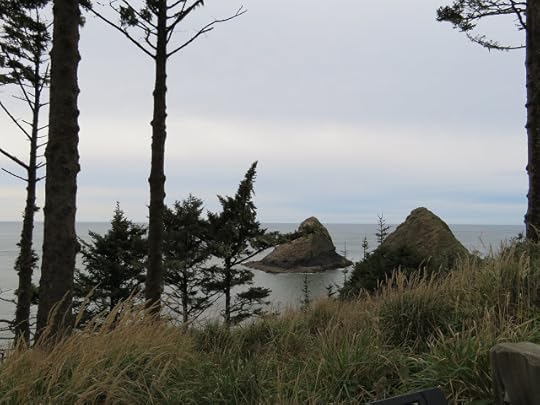
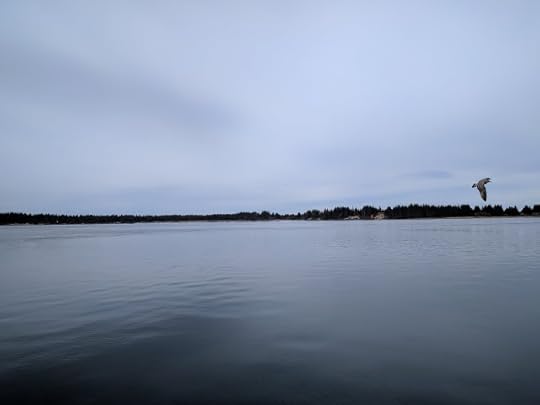



October 11, 2017
Landscapes of the Yellowstone National Park: In five pics

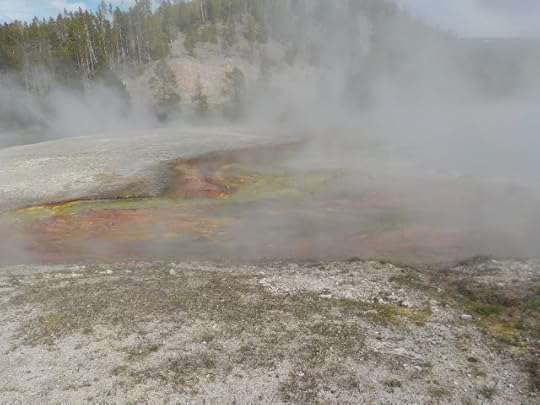


October 6, 2017
Lakes of Minneapolis: In five pics

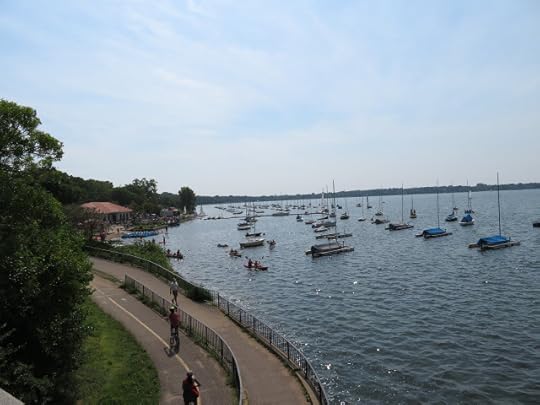



September 12, 2017
Glaciers of Prince William Sound, Alaska: In Five Pics
 Otters chilling out in the backdrop of a gorgeous glacier.
Otters chilling out in the backdrop of a gorgeous glacier.
Glacier structure up, close and personal.

Ocean, rain forest and a grand glacier.

Here the glacier looks like a river, as they are slow moving rivers of compact snow.
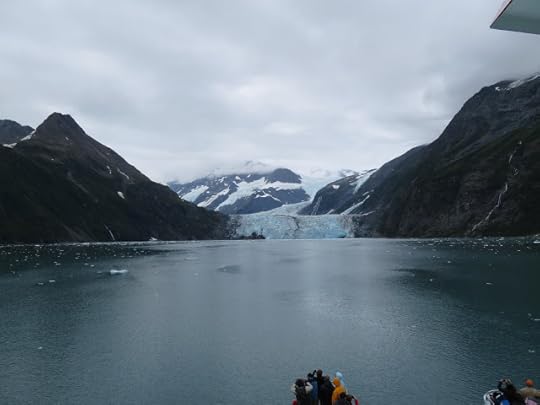
Our cruise approaching the surprise glacier. Yes surprise is the name of the glacier.
June 18, 2017
A Motivation for the Holocaust
Rolf had avoided any events that reminded him of his past,but when he heard Selig Baar was speaking he had to go. Rolf saw it as anopportunity to let go of his past; the guilt he had been hiding for sixdecades. Selig Baar was speaking at a local museum after screening of thedocumentary The Motivation for the Holocaust. Rolf did not want to watch documentary.He was not keen on living his past again. He only wanted to ask a question toSelig.
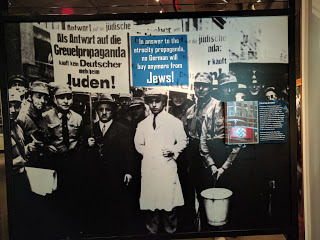
Rolf went to the museum at 6. When he entered the smallauditorium, an old man wearing rectangle glasses was walking lethargically tothe front. Rolf recognized Selig walking to the front. Before Selig turnedaround, Rolf quickly slipped into a seat in the last row. The auditorium wassmall. Scanning the atmosphere, Rolf saw around 70 people in 100 seats. All themembers of audience were in awe and unable to move. Holocaust had beenmesmerizing people for years. It had the same effect on that day.
Between two rows of seats, a microphone was getting the mostattention. Before Selig settled into his chair and took charge of his microphone,three people lined up to ask question.
“Thank you all for joining us today and once again pleasewelcome Selig Baar.” A female voice filled the auditorium. Rolf could not seeher from his seat. He did not make any effort also, as Rolf was avoiding eyecontact with Selig. “The word holocaust in the context of World War 2 wassynonymous with gas chambers. However, as we saw today, there was much more toit. It started years before the world war. It was more than gas chambers,unethical taxation, segregation, racism, eviction, mass graves, murders, lootand many more words can be used to describe them. Selig Baar is here with us:one of the survivors of those terrible times. Please ask your questions.”
Rolf adjusted in his seat to have a look at Selig’s face.After six decades, the man was distant resemblance to his younger self. Selig’ssaggy face, big bones, thin hairs were evident of the time passed. Selig was nolonger the skinny blond boy Rolf remembered.
“Do you hate Germans?” The first question was fired atSelig.
Selig laughed loudly. “This is one question I preparedanswer for. I didn’t expect it to be the first one though. I am German. Can Ihate myself?” Many members of the audience chuckled with Selig. “I understandyour question. Holocaust was not a showdown between German and Jews. I believeexcept for Denmark and Finland, local authorities and structure participated inholocaust. France, Lithuania, Yugoslavia, you name it. Neighbors, friends,classmates, colleagues, employers, they all participated. On the other hand,Romas, some ethnic Polish leaders were also killed. I have never been anythingelse than German. How can I hate Germans?” Even though Rolf avoided the movie,he could not avoid the memories. He was shifting in his chair. He wasuncomfortable. The discussion was already unbearable.
“Mr. Baar. Thank you for being here today. That was aninspiring movie. I loved the stories of survivors, because we all have heardhorrible stories of deaths and killings. First time I saw so many stories oftriumph over evil. Can you shed some light on your thoughts on this movie?”Second question was asked to Selig.
Selig coughed. “My thoughts. The movie you saw was the lifewe lived. This movie is about human interactions in the wake of the tragedy.Every person is driven by something. Greed, Compassion, Love, Hate, Jealousy.When greed, jealousy, hate took over a person they reported us to theauthorities, participated in killings, robbed our belongings. When compassion,love, care won, they helped us. In the end, all those people survived becausesomeone on the other side helped them at great risk. I remember one instancewhen a Nazi officer called an old Jew friend advising him to leave the city. Thismovie is beyond the holocaust itself. It speaks of human interaction in thosedifficult times. It highlights the complexity of those interactions.”
“What, in your opinion, did drive betrayal of friends? Howcould a neighbor turn a blind eye and commit such a horrific act?” Thirdquestion was asked. The microphone was solitary again as all three questionerstook their seats.
“One thing Nazis did right was segregation. They identifiedus and segregated us. After that, negative emotions were enough to drive the restof the horror. How many of you can positively say that you have never beenjealous of any of your neighbors? None.” Selig counted raised hands in theaudience. Rolf was at the peak of uneasiness by then. He knew if he did not getup at that moment, he would lose his courage. Rolf got up to move towards thesolitary microphone, but he kept a low profile and looked sideways. He did notwant Selig’s attention. Selig continued, “But I realize you don’t kill them.The reason: They are integrated and part of the society. Similarly, many Jewswere integrated into the society. They attended the same school, lived withinthe same community, played together. When Nazis segregated them, theintegration was gone. The barrier vanished. There was no inhibition. Peoplebelieved that Jews were non-significant. And if you discriminate or harm Jews,you had no repercussions. In fact, peer pressure ensured, in many cases, thatyou do not stand with the Jews. If you were jealous of a Jew, you had a reasonand no inhibition. If you hate, you had a reason and no inhibition. If you weregreedy, you had a reason and no inhibition. Many officers were simply doingtheir duty. If you teach a soldier in army to kill an enemy, he is not makingany judgment as to who the enemy is or what are the crimes. He is simplyfollowing orders and doing his duties.” Selig stopped for a while. Rolf was betweentwo rows of seats slowly walking towards the microphone. He had his hand on hisforehead to avoid seeing eye to eye with Selig. After deep breath Seligcontinue, “In absence of an inhibition, every human fights a battle betweennegative and positive motivation. Many times whichever side wins, decided hisaction. However, all of us at times are simply incapable of fighting the battleand go with the flow. Nazis created a flow and many just followed. Nonetheless,not all was bad. You saw the movie. Many Jews survived. They survived throughgood fortune and kind and love of non-Jews.”
Rolf was at the microphone. He said, “What is your story?”Selig looked up. Rolf and Selig were looking into each other’s eyes after sixdecades. A light in Selig’s eyes assured Rolf that they both recognized eachother.
Selig said, “You ask my story. I was betrayed, by a friend.My best friend for ten years told Nazis about us. They came after my family andme. We had to run. And then.” Selig paused for a moment. Rolf was not blinking.Selig continued looking at the blank face of Rolf, “My father had a shop in thevillage. His neighbor was a wealthy man. He had the biggest shop in thevillage. He took us and kept us in his basement for eight years. We hardly sawthe daylight for eight years. But finally, we were able to start the new life.We were lucky than the most. We did not have to leave our village, though welost everything we had, including our hope. How can I hate Germans? I was betrayedby one, I was saved by one and I am one.” Selig and Rolf were staring at eachother by the time.
Gathering courage, Rolf followed up, “Do you hate yourfriend?”
Selig removed his glasses and wiped his face with his hands.He looked into Rolf’s eyes and said, “No Rolf. I do not hate you. How did youhate me?” Audience gasped.
“I did not,” Rolf cried. “I did not hate you. I was elevenyears old. As you said, I had no inhibitions and negative feeling called fearwon. You were always top of the class. You were always ahead of me in studies.I feared lagging behind. I saw it as an opportunity. I thought by complainingabout you, you will be thrown out of school and I would be the best student. Inever meant any harm to you. It was childish. I had been carrying this guiltfor years. This is my chance to apologize. I could not change the history, butI could acknowledge my mistake.”
Selig stood up. “The reason my story was not part of thatmovie, because I could not muster the words, my friend betrayed me. I couldonly say it today because I was looking at you. It took us 6 decades, but wemet.” Selig and Rolf walked towards each other and hugged. The audienceapplauded. They witnessed one more story of win from holocaust.
P.S.: Above story is fictional, but it is inspired from areal exhibition at the National Holocaust museum in Washington, DC. TheHolocaust has been symbolized by all the atroctities and brutalities, but “Somewere neighbors” exhibition highlights human connections and dynamics during theholocaust. If you get a chance, please go and see it. Here is the website forthe reference: http://somewereneighbors.ushmm.org/



